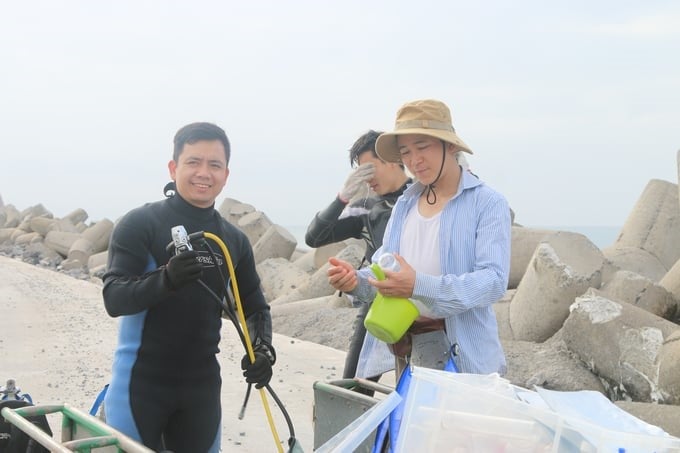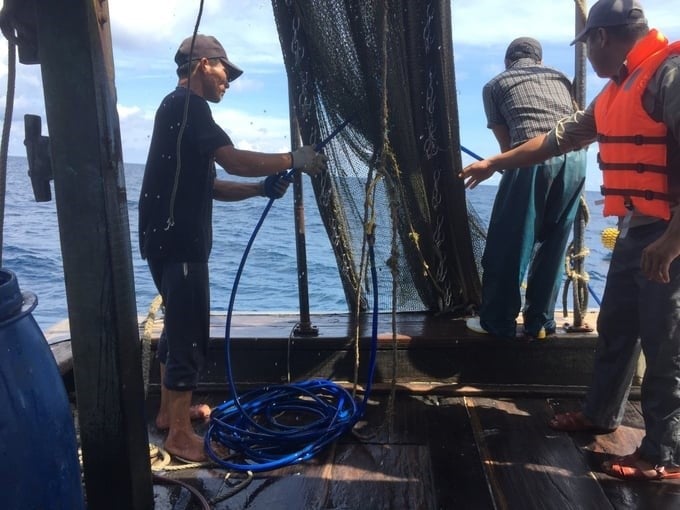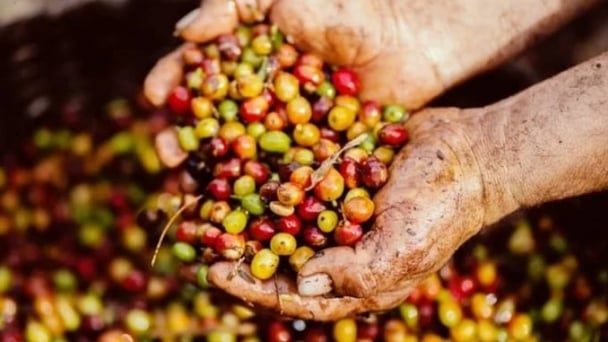June 18, 2025 | 03:12 GMT +7
June 18, 2025 | 03:12 GMT +7
Hotline: 0913.378.918
June 18, 2025 | 03:12 GMT +7
Hotline: 0913.378.918

Seafood exploitation in the Gulf of Tonkin. Photo: Dinh Muoi.
The existing seafood resource data investigated and collected by the Research Institute for Marine Fisheries (RIMF) over the past 15 years has very high practical value. Research results on breeding grounds, spawning grounds, and spawning seasons of seafood species have provided a scientific basis for proposing the formation of areas to protect seafood seed sources in Vietnam.
In addition, these data have also helped functional agencies synchronize, standardize, analyze, identify, and select a set of criteria to classify sea areas according to ecological functions based on the level of response to the data over space and time. At the same time, 15 ecological zones and 3 fisheries management zones have been identified as suitable for biodiversity characteristics and seafood resources in Vietnamese waters.
On that basis, the principles and methods of seafood exploitation in each ecological zone and fisheries management zone have also been determined based on the overall goals of the ecosystem approach to fisheries management. These principles include protecting biodiversity, protecting seafood seed sources, protecting resources, and developing fisheries.
According to RIMF, the investigation trips have collected field data and developed thematic reports assessing the actual state of biodiversity, seafood resources, and fisheries activities, as well as built a list of economic, rare, and endemic seafood species that need to be protected. From the achieved results, a set of solutions to preserve and rationally use biodiversity resources in accordance with the characteristics and needs of local socio-economic development.

Scientists research seafood resources in the Gulf of Tonkin. Photo: Dinh Muoi.
Particularly in the common fishing area of the Gulf of Tonkin, research data RIMF collected from 20 survey trips in the common fishing area of the Gulf of Tonkin by bottom trawls during the phase V research period showed that seafood resources in this area are relatively diverse, with the number of species and species groups encountered during survey trips by high bottom trawls dominated by trash fish species and small pelagic fish species.
From the survey, it can be affirmed that productivity and density of resources in the current period are relatively stable, but the decline in resources is very clear, especially compared to years in the period 2006–2010.
The average reserves of seafood resources are estimated at over 40,000 tons, and the quality of the resources does not change much between years. Compared to previous periods, the resources tend to continue to decline.
Seafood resources are currently dominated by trash fish species and small pelagic fish species. Some of the species that have the greatest advantage in the survey trips include squirrel fish, trachurus japonicus, evynnis cardinalis, Chinese squid, decapterus maruadsi, saurida tumbil, ponyfish, trichiurus lepturus linnaeus, saurida undosquamis, psenopsis anomala,etc.

Assessing seafood resources in the common fishing area in the Gulf of Tonkin is the most important scientific basis in negotiations to adjust fishing power. Photo: Dinh Muoi.
Currently, most species with high economic value in the common fishing area of the Gulf of Tonkin are being exploited at a high ratio. Total seafood output exploited in the common fishing area in phase V fluctuates between 26,000 and 45,000 thousand tons. The optimal sustainable exploitation output in the common fishing area is estimated at about 10,100 thousand tons/quarter.
According to the RIMF’s assessment, the composition and distribution characteristics of fish eggs and juvenile fish in the common fishing area of the Gulf of Tonkin in phase V have not changed compared to the previous period. The area with the highest concentration is the northern waters of the common fishing area, followed by the middle of the gulf, and the area with the lowest concentration is the bay-mouth area. The density of juvenile fish eggs tends to decrease, affecting the amount of potential supplementation.
Assessing the actual state and annual fluctuations in seafood resources in the common fishing area of the Gulf of Tonkin is the basis for adjusting the number of boats and proposing sustainable fisheries management solutions in the coming period, contributing to the implementation of the Agreement on Fishery Cooperation in the Gulf of Tonkin between Vietnam and China.
"The results of assessing the actual state and fluctuations in seafood resources in the common fishing area in phase V have been agreed upon by the Vietnam-China resource expert group. The studies were highly appreciated by the Tonkin Gulf Joint Fishery Committee and used as the most important scientific basis in negotiating to adjust fishing power in the common fishing area," a scientist in the seafood resource investigation group shared.
Translated by Huyen Vu Thu
![Turning wind and rain into action: [7] Early disaster warnings help marine farmers minimize losses](https://t.ex-cdn.com/nongnghiepmoitruong.vn/608w/files/news/2025/06/17/z6704423696987_15fd32ffc26d590d204d520c9dac6786-nongnghiep-142942.jpg)
(VAN) In recent years, thanks to early disaster warnings and forecasting, marine farmers in Khanh Hoa province have been able to reduce risks and losses, thereby improving production efficiency.
![Turning wind and rain into action: [6] ‘Four on-the-spot’ disaster management software](https://t.ex-cdn.com/nongnghiepmoitruong.vn/608w/files/news/2025/06/17/e5a48259d6a262fc3bb3-nongnghiep-183800.jpg)
(VAN) By simply activating the scenario on the disaster management software, the relevant authorities immediately know how many households need to be evacuated, where to evacuate them to, and by what means of transportation…
![Turning wind and rain into action: [5] Hue applies modern technology in disaster forecasting](https://t.ex-cdn.com/nongnghiepmoitruong.vn/608w/files/news/2025/06/17/z6704423696987_15fd32ffc26d590d204d520c9dac6786-nongnghiep-093938.jpg)
(VAN) In Hue city, modern technology has recently been applied in meteorological and hydrological forecasting and warning, helping to reduce the damage caused by natural disasters.

(VAN) A cutting-edge farming technique being implemented on an experimental ranch in Arizona's Sonoran Desert has already saved a billion gallons of water over five years, according to Civil Eats.

(VAN) Poultry and pig production and the environment can be boosted through enhanced water technology, according to new research.

(VAN) Coffee prices on June 16, 2025 are unchanged. In Vietnam, local trading prices are holding steady, ranging around VND 112,000 – VND 112,500/kg.
![Turning wind and rain into action: [4] Bringing climate bulletins to remote and isolated areas](https://t.ex-cdn.com/nongnghiepmoitruong.vn/608w/files/linhnhp/2025/06/14/1152-z6704423696987_15fd32ffc26d590d204d520c9dac6786-nongnghiep-151141.jpg)
(VAN) The Vietnam Agriculture and Nature Newspaper interviewed Mr. Vu Thai Truong, Acting Head of Climate Change and Environment at UNDP Vietnam, to gain deeper insight into how climate bulletins are delivered to farmers.